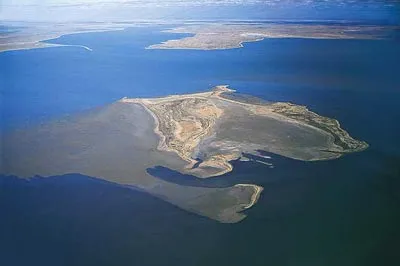Saltwater lakes, whether naturally occurring or part of an ocean, are always intriguing destinations for travelers and explorers. They are not only subjects of scientific research but also unique natural wonders offering unforgettable experiences. Let’s explore Walker Lake, a renowned saltwater lake in Nevada, to understand its beauty and the intriguing aspects it offers.
What Makes Saltwater Lakes Special?
A lake is considered saltwater when the salt concentration in the water measures 25 grams per liter or more. In comparison, the average salt concentration in seawater ranges from 35 to 42 grams per liter. A lake is considered hypersaline when its salt concentration exceeds 50 grams per liter. However, the salinity of these lakes is not fixed and can vary based on geographical location and weather conditions. Globally, there are two main types of saltwater lakes:
- Lakes formed from ancient ocean fragments: These lakes arose from tectonic shifts that separated ancient oceans. Notable examples include the Caspian Sea, the Aral Sea, the Dead Sea, and the Sea of Galilee.
- Closed basin lakes with no outlets: Most of these lakes form in basins or from tectonic fractures, such as Lake Eyre in Australia or Lake Issyk-Koul in Kyrgyzstan.
The Journey of Discovering Walker Lake, Nevada
Walker Lake, situated in Nevada, USA, is a classic example of a lake that has become saline over time due to the lack of outlets to the sea or ocean. Evaporation causes the salinity to increase significantly. Walker Lake was once a jewel of Nevada but now faces numerous environmental challenges.


Walker Lake is located in a dry region but still attracts tourists due to its pristine and unique beauty. It is an ideal destination for nature enthusiasts interested in exploring the distinctive ecosystems of saltwater lakes.
The Formation and Geographic Features of Walker Lake
Walker Lake is the remnant of the ancient Lake Lahontan, a much larger body of water that covered much of Nevada during the last ice age. Lake Lahontan gradually disappeared due to climate change and evaporation, leaving behind smaller lakes like Walker, Pyramid, and Winnemucca.
Walker Lake is located in Mineral County, Nevada, nestled between the Walker River Range and Wassuk Range. Its surface area varies depending on water levels, but it is currently much smaller than its historical size.
Environmental Challenges Facing Walker Lake
Walker Lake is facing significant challenges, primarily due to excessive water use from the Walker River, its main water source. Water from the Walker River is diverted for agricultural irrigation, leading to a considerable drop in the lake’s water levels.
The reduction in water levels has resulted in several negative consequences:
- Increased salinity: As the water volume decreases, the salinity level rises, posing a threat to native fish species and the lake’s ecosystem.
- Loss of habitat: The shrinking size of the lake has led to the loss of vital habitats for migratory birds and other wildlife.
- Dust issues: When the lakebed dries out, winds can blow dust from the lakebed, causing air pollution and posing health risks to humans.
Conservation Efforts for Walker Lake
Various organizations and individuals are striving to conserve Walker Lake and restore its water levels. These efforts include:
- Purchasing water rights: Conservation organizations are buying water rights from farmers to redirect water back to the Walker River and Walker Lake.
- Improving irrigation efficiency: Programs encourage farmers to adopt more efficient irrigation methods to reduce water usage.
- Community education: Raising awareness about the importance of conserving Walker Lake and water resources among the community.
Tourism and Recreational Activities at Walker Lake
Despite facing many challenges, Walker Lake remains an attractive destination for tourists and locals. Visitors can engage in various recreational activities at the lake, including:
- Fishing: Walker Lake was once a popular fishing spot, but due to increased salinity, fish populations have significantly declined. However, some species can still survive in these harsh conditions.
- Kayaking and paddleboarding: Visitors can rent kayaks or paddleboards to explore the lake and enjoy the surrounding landscape.
- Hiking and sightseeing: Numerous hiking trails around Walker Lake offer visitors the chance to view panoramic vistas of the lake and surrounding mountain ranges.
- Birdwatching: Walker Lake is an important stopover for migratory birds, especially during spring and fall.
Discovering Local Cuisine Near Walker Lake
When visiting Walker Lake, don’t miss the opportunity to savor local cuisine at nearby restaurants and eateries. You’ll find a variety of delicious dishes and Nevada specialties, such as grilled beef, burgers, and Mexican cuisine.


Conclusion
The journey to discover Walker Lake is a memorable experience, offering visitors the chance to admire the untamed beauty of nature and gain insight into the environmental challenges the lake faces. Let us join hands to protect and preserve natural wonders like Walker Lake for future generations.
Can we change Walker Lake’s future and conserve this unique beauty for future generations?